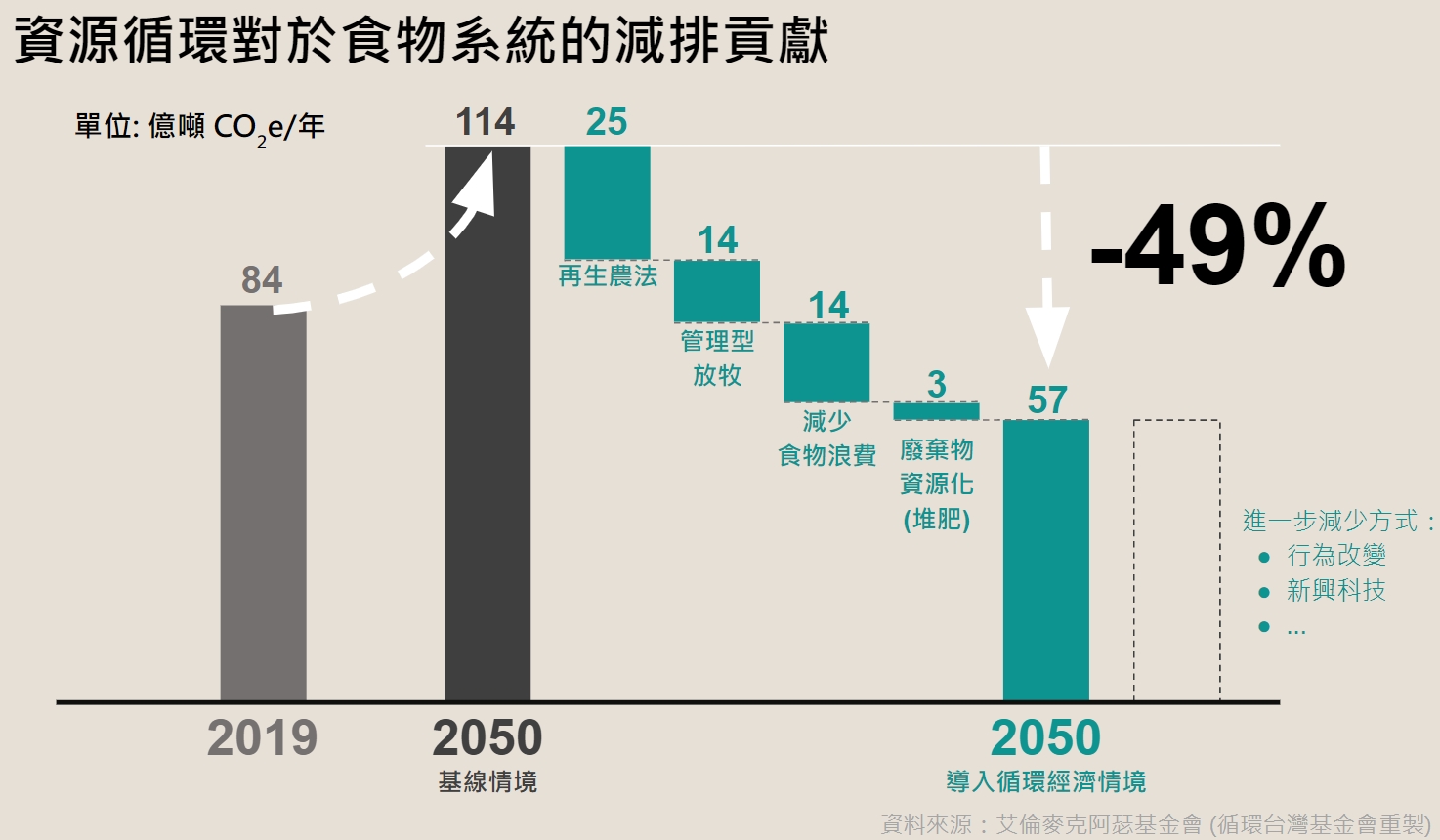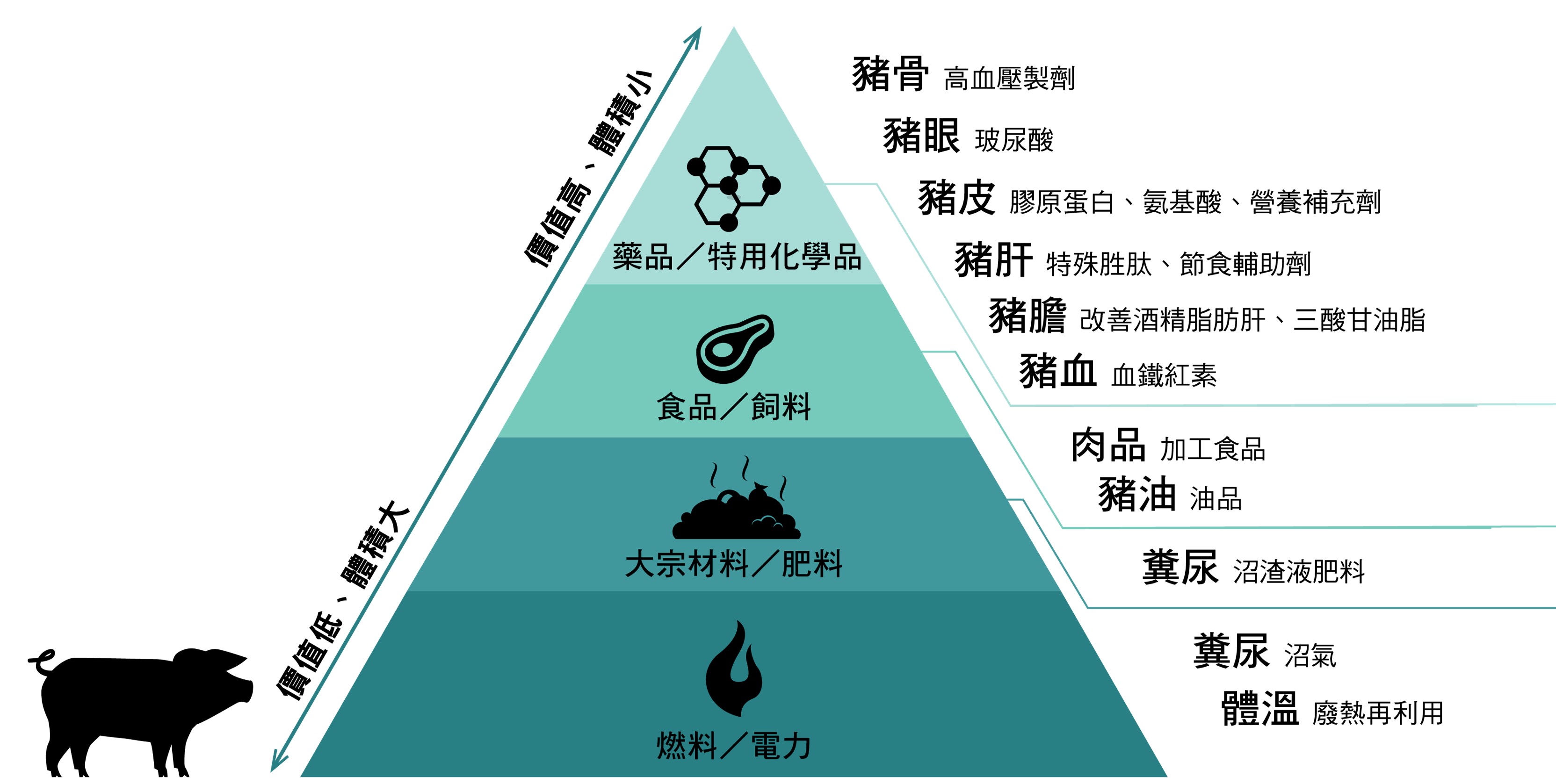With over one billion people working in the agricultural and food sector—spanning cultivation, processing, packaging, transportation, sales, and cooking—the industry is a cornerstone of the global economy. However, this system heavily relies on Earth's resources: 50% of habitable land and 70% of freshwater are allocated to food production, resulting in significant emissions of various greenhouse gases.
Despite these massive resource investments, one-third of all food is lost or wasted before consumption. The environmental consequences of this system—including land degradation, ecological disruptions, and climate change—now exceed the planet’s ability to recover.
Greenhouse Gas Emissions Across agri-food System Stages
By 2050, total emissions from the global agri-food system are projected to rise by more than one-third, from 8.4 billion tons to 11.4 billion tons of CO2 equivalent.
Production Stage: Over 60% of agri-food system emissions originate from food production.
Enteric fermentation and inadequate manure management contribute to significant methane (CH4) emissions in beef production.
- Rice cultivation under anaerobic conditions releases substantial amounts of methane (CH4), accounting for 10% of global food production emissions.
- Excessive tillage reduces soil carbon sequestration capacity, while over-fertilization leads to nitrous oxide (N2O) emissions.
- The production of ammonia-based fertilizers generates high levels of carbon dioxide (CO2).
Transportation Stage: Logistics play a crucial role in emissions, as food processing, transportation, and refrigeration consume vast energy resources.
Waste Management Stage: Food waste contributes significantly to emissions, whether through natural decomposition, waste processing, transportation, or storage. Across the supply chain, 30% of food is discarded, making food waste a major emissions source.
According to the Ellen MacArthur Foundation, implementing circular economy strategies in the global food system could reduce emissions by 5.6 billion tons of CO2 equivalent by 2050, representing a 49% reduction in total food system emissions.
Three key strategies can enhance soil carbon sequestration and reduce supply chain emissions:
- Redesigning cultivation and livestock management by adopting regenerative agriculture and managed grazing practices that prevent soil degradation.
- Reducing food waste at all supply chain stages.
- Repurposing waste into industrial raw materials or soil nutrients.

Regenerative Agriculture & Managed Grazing (Potential Reduction: 3.9 Billion Tons CO2 Equivalent)
Regenerative farming and managed grazing enhance soil health, biodiversity, and ecosystem resilience. Soil organic matter plays a crucial role by improving physical structure, fostering beneficial microbes, and increasing carbon sequestration. This approach boosts water retention and reduces dependence on synthetic fertilizers.
- Regenerative Agriculture (Potential Reduction: 2.5 Billion Tons CO2 Equivalent)
Practices include reduced or no-till farming to prevent carbon loss, decreasing reliance on carbon-intensive inputs such as agricultural machinery and synthetic fertilizers.
Up to 800 million hectares of farmland worldwide could adopt regenerative agriculture. If 80% of these lands implement such practices, emissions reductions could reach 2.5 billion tons of CO2 equivalent.
- Managed Grazing (Potential Reduction: 1.4 Billion Tons CO2 Equivalent)
By carefully controlling grazing patterns, optimizing stocking density, and integrating mixed grazing systems, managed grazing improves soil health, enhances carbon sequestration, and increases forage supply.
Globally, 3.3 billion hectares are used for grazing, with 40% suitable for managed grazing. If half of this land adopts the practice, it could reduce emissions by 1.4 billion tons of CO2 equivalent by 2050.
Reducing Food Waste (Potential Reduction: 1.4 Billion Tons CO2 Equivalent)
Food waste occurs across the entire agrifood value chain, not just at the consumer level. Key strategies include:
- Food suppliers: Repurpose "imperfect" fruits and vegetables into processed food ingredients.
- Retailers: Offer discounts on near-expiry products or use them in in-store restaurants.
- Digital platforms: Use technology to redistribute surplus food to communities in need.
Behavioral changes and waste reduction initiatives could cut food waste by 50%, with a potential reduction of 1.4 billion tons of CO2 equivalent annually.
Waste Valorization: Composting (Potential Reduction: 300 Million Tons CO2 Equivalent)
Each year, 600 million tons of organic waste are generated in urban areas worldwide, yet less than 2% is reintegrated into production. In a circular economy, organic waste is considered a byproduct rather than waste. Simple organic materials can be used for industrial applications (e.g., textiles, packaging, furniture), while complex materials can undergo aerobic composting or anaerobic digestion to produce biogas and organic fertilizers.
Converting agrifood byproducts into compost reduces emissions, lowers dependence on chemical fertilizers, and mitigates emissions from fertilizer production, potentially cutting 300 million tons of CO2 equivalent annually.
Further Emission Reductions: Emerging Technologies & Behavioral Changes
While circular economy practices could reduce food system emissions by 49%, achieving net-zero emissions will require additional measures such as precision agriculture, methane inhibitors for livestock, AI-driven food waste reduction, and IoT applications.
Behavioral change is another critical factor. Adjusting dietary habits, minimizing waste, and implementing long-term educational programs can significantly impact emissions. According to the IPCC AR6 report, behavioral change could contribute 40% to 70% of the necessary emissions reductions, highlighting the importance of individual lifestyle choices in achieving net-zero goals.
"Agriculture not only gives riches to a nation, but the only riches she can call her own."— Samuel Johnson
Taiwan’s limited land resources mean food self-sufficiency is a challenge. Achieving both national food security and net-zero emissions requires systemic transformation. By embracing circular economy principles—from farmland to factories, markets to dining tables, and ultimately returning nutrients to the soil—a regenerative food system can be designed.
Farmland to Factories
The adoption of regenerative agriculture and managed grazing is crucial for transitioning from conventional farming—which relies on monoculture, chemical fertilizers, and pesticides—to diversified production methods that make full use of local water resources, soil health, and ecosystems. This shift helps sustain soil vitality and fosters a thriving biological environment, ensuring a safe, healthy, and sustainable food production system.
(Case Study:Agri-Dragon Biotech Co., Ltd.)
Taiwan generates a variety of agricultural and livestock by-products, such as pig manure, rice straw, soybean pulp, and oyster shells, all of which hold significant value. By applying the biomass value pyramid concept, a zero-waste, full-utilization approach can be implemented, sequentially repurposing these materials into pharmaceuticals/specialty chemicals, food/feed, bulk materials/fertilizers, and fuel/electricity—maximizing their value in a circular economy.
(Case Study:Leezen、TCI Co., Ltd.、KGBio)
For example, properly collecting and processing pig manure in Taiwan—combined with rice straw, food waste, and wastewater—could support the development of 150 biogas centers, generating an industry value exceeding NT$10 billion.
(Case Study:Donghaifeng Agricultural Circular Park)

From Market to Table
Taiwan’s food self-sufficiency rate is below 40%, yet more than 2 million metric tons of food waste are generated annually, while many people still struggle with food insecurity. The waste extends beyond food itself—it includes the land, fertilizers, feed, water, energy, and labor invested in production.
To reduce food waste, individuals can start by shifting their mindset and behaviors—cherishing every meal, adopting zero-waste cooking methods, and prioritizing local, seasonal, and low-impact ingredients. Businesses and communities can collaborate to repurpose surplus food and cosmetically imperfect produce or redistribute them to those in need.
(Case Study:1919 Food Bank、Carrefour)
From Table to Land
On average, each household in Taiwan discards approximately one kilogram of food waste per day, amounting to over 2 million metric tons annually. Transforming this waste into organic fertilizer presents a business opportunity exceeding NT$10 billion.
Beyond food waste, all organic resources can ultimately return to the land as nutrients. With proper planning, this not only unlocks significant economic potential but also reduces chemical fertilizer use and creates local employment opportunities.